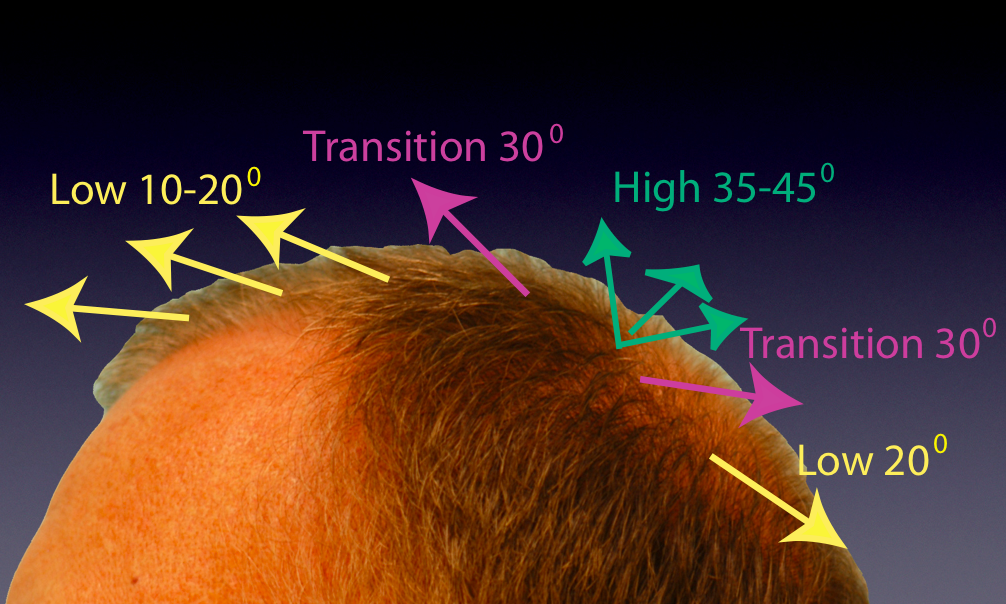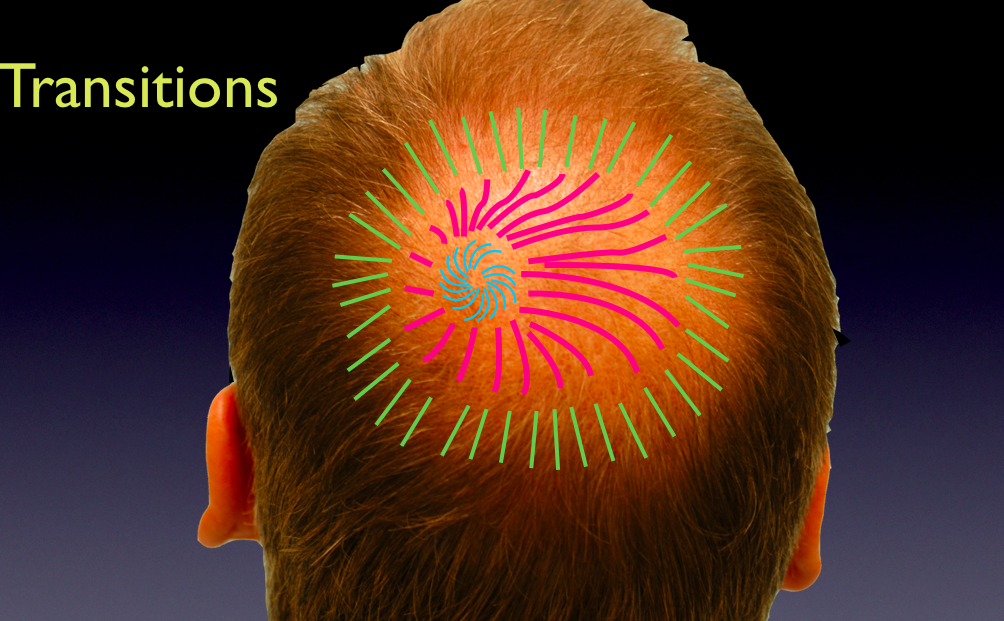Hair Transplant for the Crown Part 4: Creating the Right Angles and Transitions
To continue our series on crown restoration, this article will focus on creating the right angles and transitions during the procedure. When viewed from a profile, a patient without hair in the crown looks bald because there is a relative flattening of the crown. To restore the round appearance of the crown it is important to create very perpendicular angles vis-à-vis the scalp. This stands in contradistinction to the hair angles in the anterior portion of the head and the very low portion of the crown. In addition, making high angles in the crown allows the grafts that spiral in a whorl pattern to be more tightly packed together, which is very important to create added density. Finally, density in the crown is enhanced when the angles are perpendicular (unlike the frontal hairline region of the scalp) because the grafts aim skyward away from the scalp allowing the hairs to be tightly bundled and obscure the view of the underlying, bald scalp. For all of these reasons, it is imperative for the surgeon to create very high angles in the majority of the crown.

As far as transitions are concerned, like all parts of the head it is important to create natural, gentle transitions in angles from one part of the scalp to another. There is no exception to this rule when working in the crown region. To make areas look as natural as possible each part must be blended to the adjacent area. Because the crown has a lot of changes in directions it is particularly important to get the transitions right. In the accompanying figure, the light blue represents the central whorl that radiates out to connect to the surrounding fringe of hair shown in green. As seen, connecting the two requires gently turning the whorl so that there are no abrupt transitions. This observation concludes this short blog article on crown hair restoration.

Samuel M. Lam, MD, FACS is a board certified hair restoration surgeon in Dallas, Texas. To learn more about Dr Lam’s crown hair transplant procedures please visit our website hairtx.com or call 972-312-8105 to schedule a consultation.




